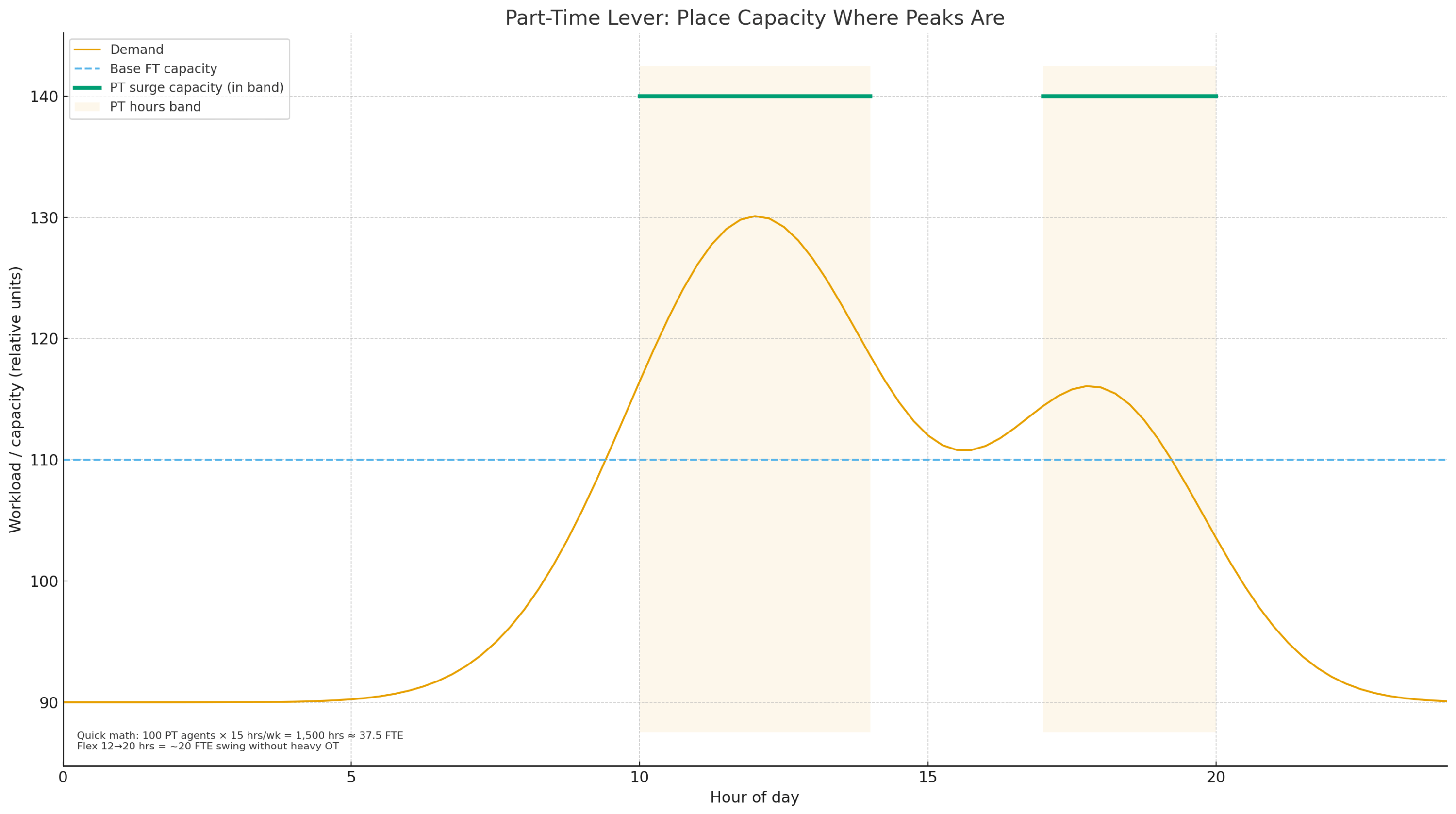The Part-Time Lever: Add 10 FTE Without Hiring 10 People

The Part-Time Lever: Add 10 FTE Without Hiring 10 People
Place capacity where the peaks are—without adding full-time headcount.
If your intraday peaks keep winning, it's possible your schedule mix is the problem—not your people. Part-time (PT) shifts let you place capacity exactly where demand peaks and avoid overstaffing the valleys.
One minute of math:
- 100 PT agents × 15 hrs/wk = 1,500 hrs/wk ≈ 37.5 FTE
- Flex down to 12 hrs/wk/agent → 1,200 hrs ≈ 30 FTE
- Flex up to 20 hrs/wk/agent → 2,000 hrs ≈ 50 FTE
That’s a swing of ~20 FTE without any hiring or overtime pay. If needed, you can always add incentive pay for targeted peak intervals to further help with coverage and use unpaid VTO (Voluntary Time Off) when intervals dip.
Guardrails that make PT work:
- Hire for specific availability windows
- Defined min/max hour requirements
- Weekend rotation (e.g., 2 of 4) or weekend only agents
- Clear incentive rules for peak intervals
Find Untapped Potential
There are people looking for part-time work for various reasons. You'll want to consider who is a good fit for you. College students? Stay-at-home parents or semi-retired individuals returning to the workforce? There are talent pools offering unique sets of skills and experiences just waiting for you to tap into them!
In an airline environment, for example, someone returning to the workforce with a passion for traveling can be an outstanding part-time employee. They get a manageable commitment and the ability to travel with their family, and you get a dedicated employee with travel experience to support your customers. Win-win!
When It Works Best
Part-time staffing is especially powerful when demand isn’t consistent throughout the day or across the week. A few scenarios where this lever delivers the biggest value:
- Seasonal peaks — holidays, weather disruptions, or summer travel.
- Split demand curves — mornings and evenings are busy, but mid-day is light. Or maybe vice versa.
- Specialized tasks — roles that don’t require a full 40 hours but add critical coverage when needed.
By plugging in the right part-time resources, you expand your team’s effective capacity without overstaffing.
Pitfall to Avoid
The mistake some leaders make is chopping schedules into tiny, inconvenient pieces. While you gain flexibility, you risk losing quality hires if the shifts don’t work for them. Aim for consistency in hours (even part-time) and build schedules that are easy to stick with. The right balance keeps retention high and coverage strong.
Want More?
Connect with leaders that utilize these types of at the Denver Leadership Summit, Nov 5–6. Join peers for real-world stories and actionable takeaways.
